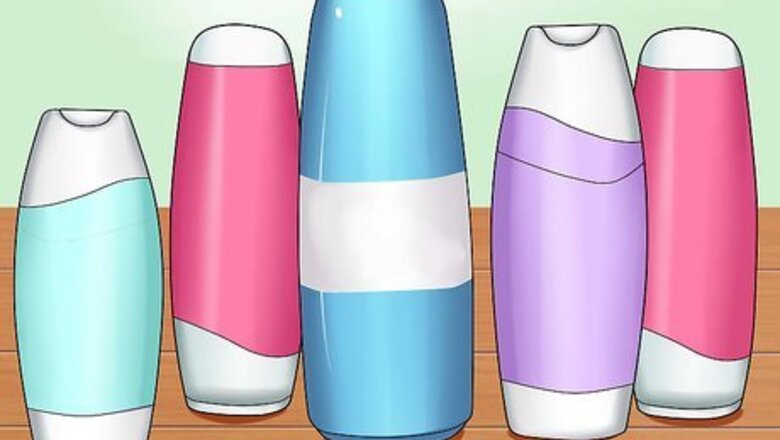
views
Bathing a Pregnant Guinea Pig
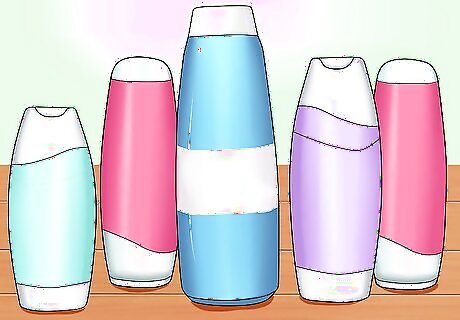
Select a shampoo. There are all types of shampoos for pets. For your guinea pig, make sure the shampoo is made specifically for small animals (it should say so on the bottle). A small animal-specific shampoo will keep your guinea pig’s skin from drying out or becoming irritated. Since your guinea pig is pregnant, the shampoo should also be non-medicated to prevent ingredients absorbing through her skin that could harm her unborn babies. Anti-fungal and anti-parasitic shampoos are medicated. Look for shampoos that are soap-free and made of natural ingredients. Do not use human shampoos on your guinea pig. They have chemicals that would be harsh on her skin. Do not purchase small animal shampoos with essential oils. Shampoos are available at your local pet store. Your veterinary clinic may also sell shampoos.
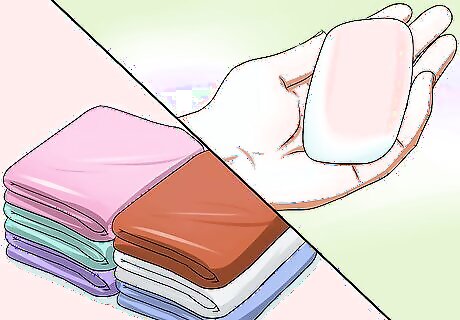
Obtain your other bathing supplies. In addition to the shampoo, you will need a few other items to bathe your pregnant guinea pig, including towels and a soft-bristled brush. If you would rather not bathe your guinea pig in a sink, you will need a small plastic tub. Also, a plastic jug or large plastic cup will be useful for pouring water on your guinea pig during the bath. A non-slip mat is essential because it will prevent your pregnant guinea pig from slipping in the water. You would not want her falling on her belly in the water. If you have a hairdryer, you could use that to dry off your pregnant guinea pig. However, the noise of the dryer can be bothersome to guinea pigs, so you may want to stick with drying her off with some towels.
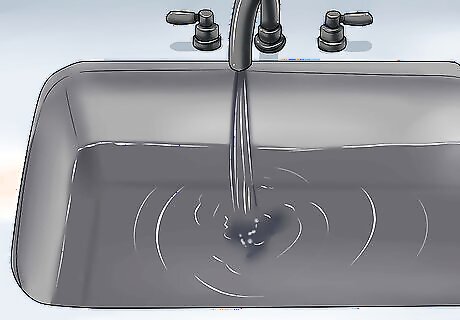
Prepare the bathing area. You should have everything organized and in place before you bring your pregnant guinea pig to the bathing area. First, run some lukewarm water in either the sink or plastic tub. Fill the area with just enough water to come up to her stomach (or a little below, if that makes you more comfortable). She should be able to keep her head comfortably out of the water. If you are using a non-slip mat, place it in the sink or tub before adding water. Place some towels near the sink or tub. The brush does not need to be near the bathing area unless you plan to dry her off in that location.
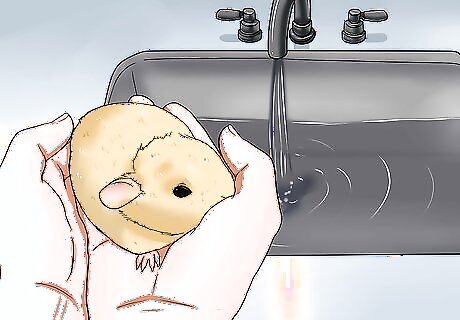
Bring your guinea pig to the bathing area. You will need to be very careful with how you handle your pregnant guinea pig. The safest way to move her is in a box. Place a small cardboard box with one side folded down in her cage so she can easily walk into it. When she is in the box, raise the side that is folded down and gently lift the box out of the cage. Walk slowly to the bathing area and place her carefully in the sink or tub, without putting much pressure on her belly. Allow her to adjust to being in the water. You may need to keep your hands on her so she doesn’t try to jump out.
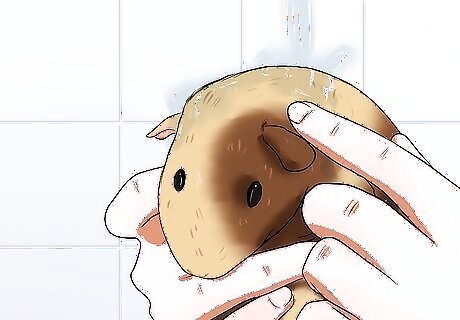
Wash your guinea pig. To get her wet, fill the plastic jug or cup with lukewarm water and gently pour the water over her. You should still use the jug or cup if you have your guinea pig in the sink, since getting wet by being held under a running tap could be frightening for her. You do not want her experiencing any additional stress when she is pregnant—this could put her unborn babies at risk. Avoid getting any water on her face or in her ears. Use a gentle, circular motion with your fingers to work the shampoo into your guinea pig’s fur. Be extra careful when you wash her belly. Try to avoid lifting your guinea pig as you bathe her to avoid putting any extra pressure on her belly. Talk to her in a soothing voice throughout the bathing process. Pay special attention to her back end. Because of her increased size, she may have trouble grooming herself, which could lead to feces getting stuck in her fur. If you see feces in her fur, try to break them up with the water and shampoo. It would be a good idea to wear gloves to do this.
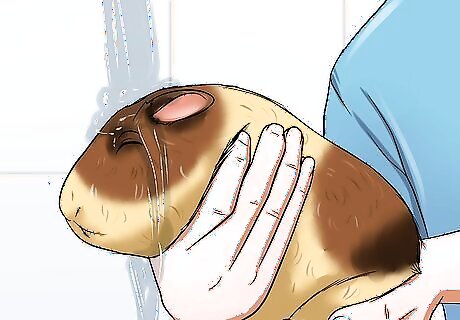
Rinse your guinea pig. After shampooing your pregnant guinea pig, gently lift her and place her on the dry set of towels that you previously placed by the sink or tub. Pour out the dirty bathwater and refill the sink or tub with clean, lukewarm water. Gently place her back in the sink or tub and pour lukewarm water over her to rinse her off. Use your fingers again to work through her fur and get all of the shampoo out. Residual shampoo could make your guinea pig’s skin feel itchy.
Drying Off a Pregnant Guinea Pig
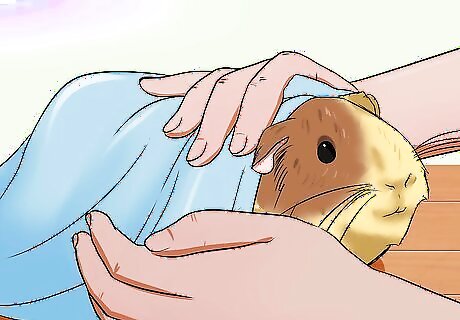
Dry off your guinea pig completely. After your guinea pig’s bath, she should be completely dry before you move her back to her cage. This is to prevent her from getting chills from being wet. This may take some time, depending on how long her hair is.
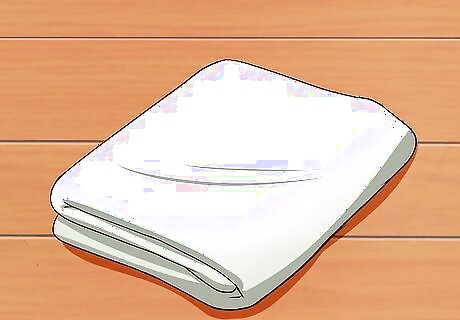
Use towels to dry off your guinea pig. Lift her gently and wrap her in a towel, being sure not to hold her in a way that puts any pressure on her belly. Dry her off with the same gentle motions as you did when bathing her. Also, be extra gentle when drying her belly. If you’d like, you can sit on the couch and watch TV while you are drying her off. There is no need to rush the process. When the first towel gets damp, wrap her in a new, dry towel and continue drying her off. If she is feeling relaxed after her bath, you may hear her start to purr with contentment! Brush her with a soft-bristled brush after she is completely dried off. This will remove any loose or excess fur. If you noticed crusted feces in her fur during the bath, check the area again when you are drying her off. If the feces are still there, use a pair of small scissors to cut out the crusty fur.
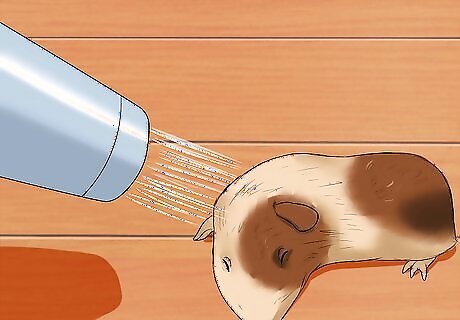
Dry your guinea pig off with a hairdryer. If you would rather use a hairdryer than a towel to dry off your guinea pig, you will need to be very careful with how you use it. First, set the hairdryer to the lowest possible heat setting. Hold the hairdryer about 8 to 12 inches (20 to 30 centimeters) away from your guinea pig and turn it on. If you are unsure if the hairdryer temperature is too hot, test it against your skin. From 20 to 30 centimeters back, if the heat from the dryer is too hot for your skin, then it is also too hot for your guinea pig. Use your soft-bristled brush to brush the fur as you are drying. Brush in the direction of hair growth. If you notice your guinea pig becoming uncomfortable with the dryer, stop using it. You do not want to add any extra stress to your pregnant guinea pig.











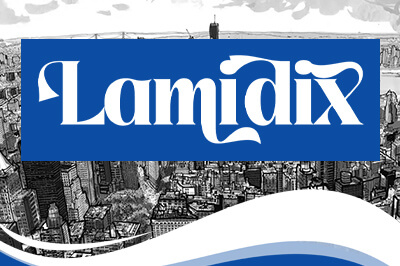



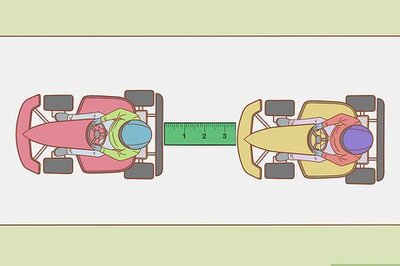



Comments
0 comment